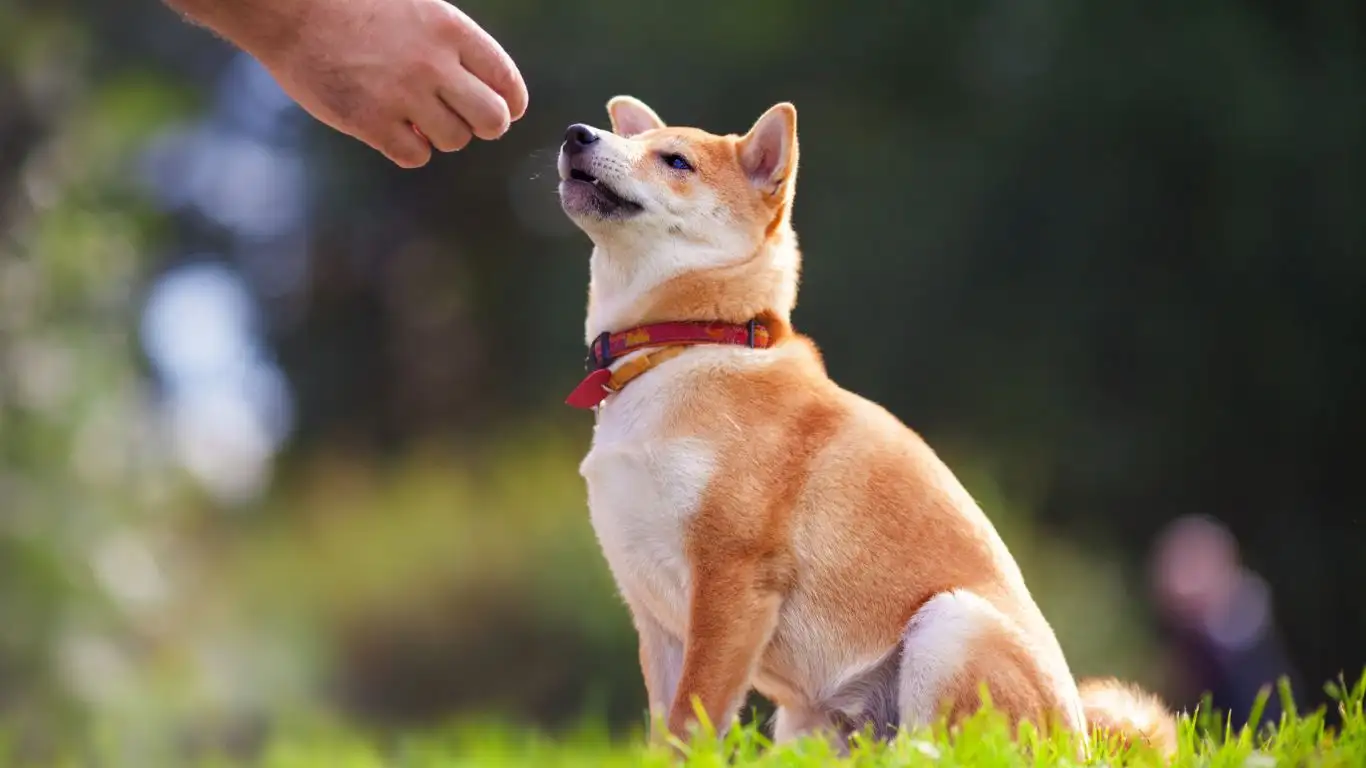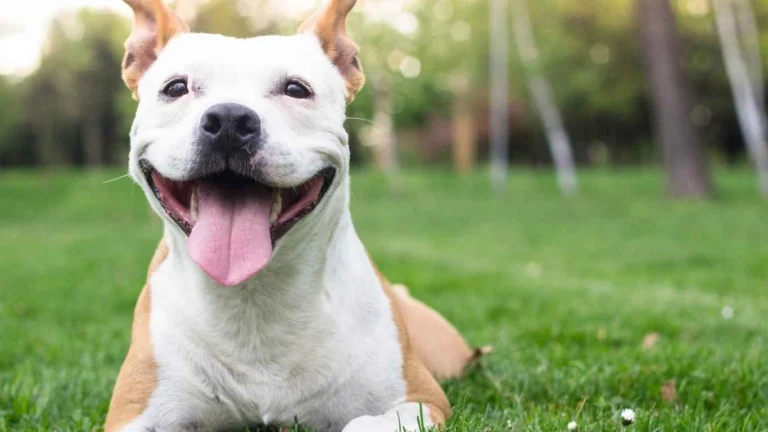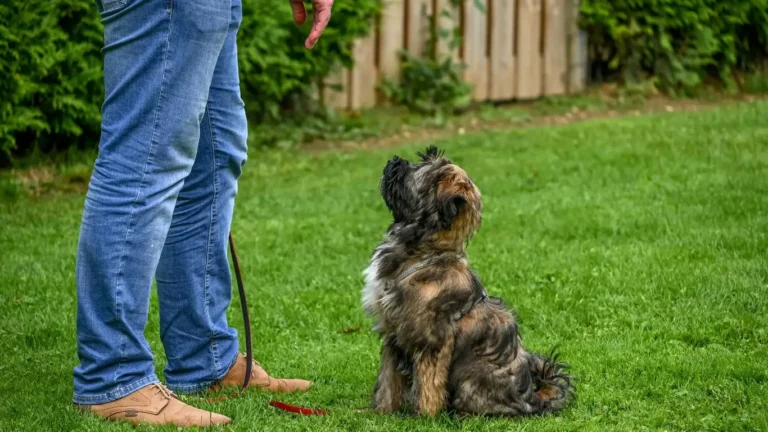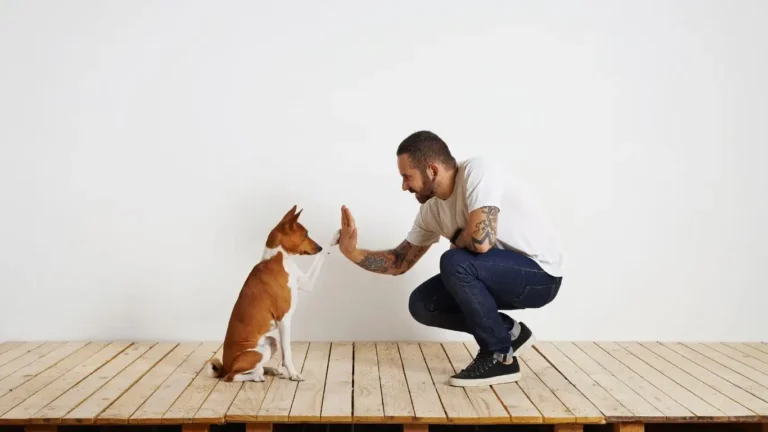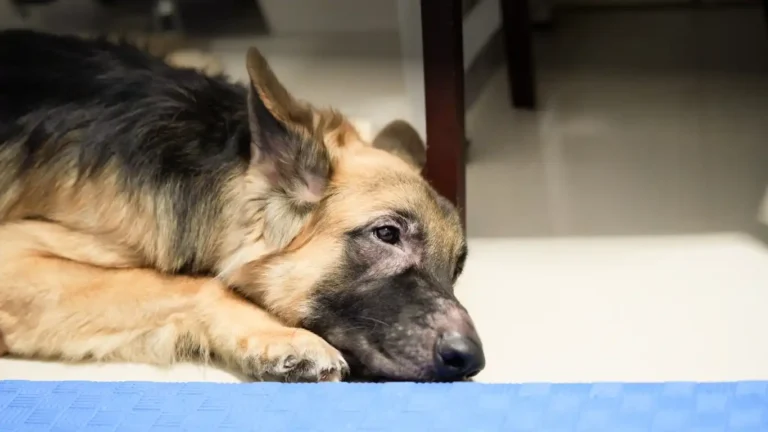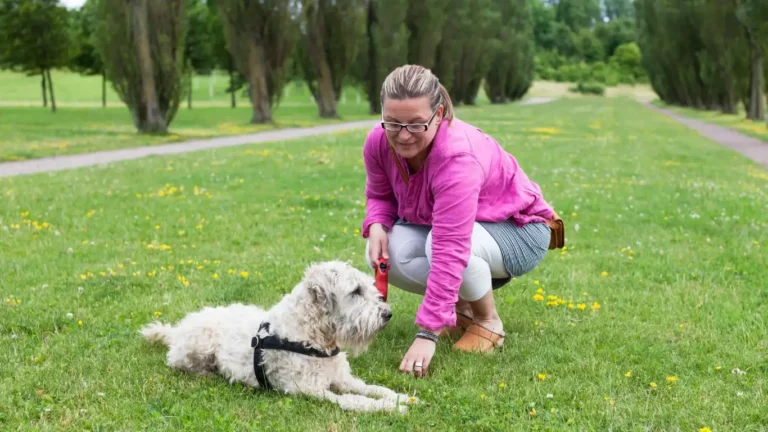How to Train a Dog to Tolerate Fireworks – Proven Tips for a Stress-Free Experience
As a Canine-Assisted Therapy Trainer, I’ve seen first-hand how dogs can experience a wide variety of fears and anxieties. One of the most common stressors for dogs—especially around certain holidays or outdoor events—is the sound of fireworks. The loud noises, bright lights, and unpredictable bursts of sound can trigger fear responses in dogs, which is why learning how to train a dog to tolerate fireworks is an essential skill for any pet parent. Over the years, I’ve gathered techniques that have helped many dogs become more resilient and calm during fireworks displays. If you’re facing this challenge with your furry companion, keep reading—I’m going to walk you through the steps to help your dog feel more at ease during these stressful moments.
Understanding Why Dogs Fear Fireworks
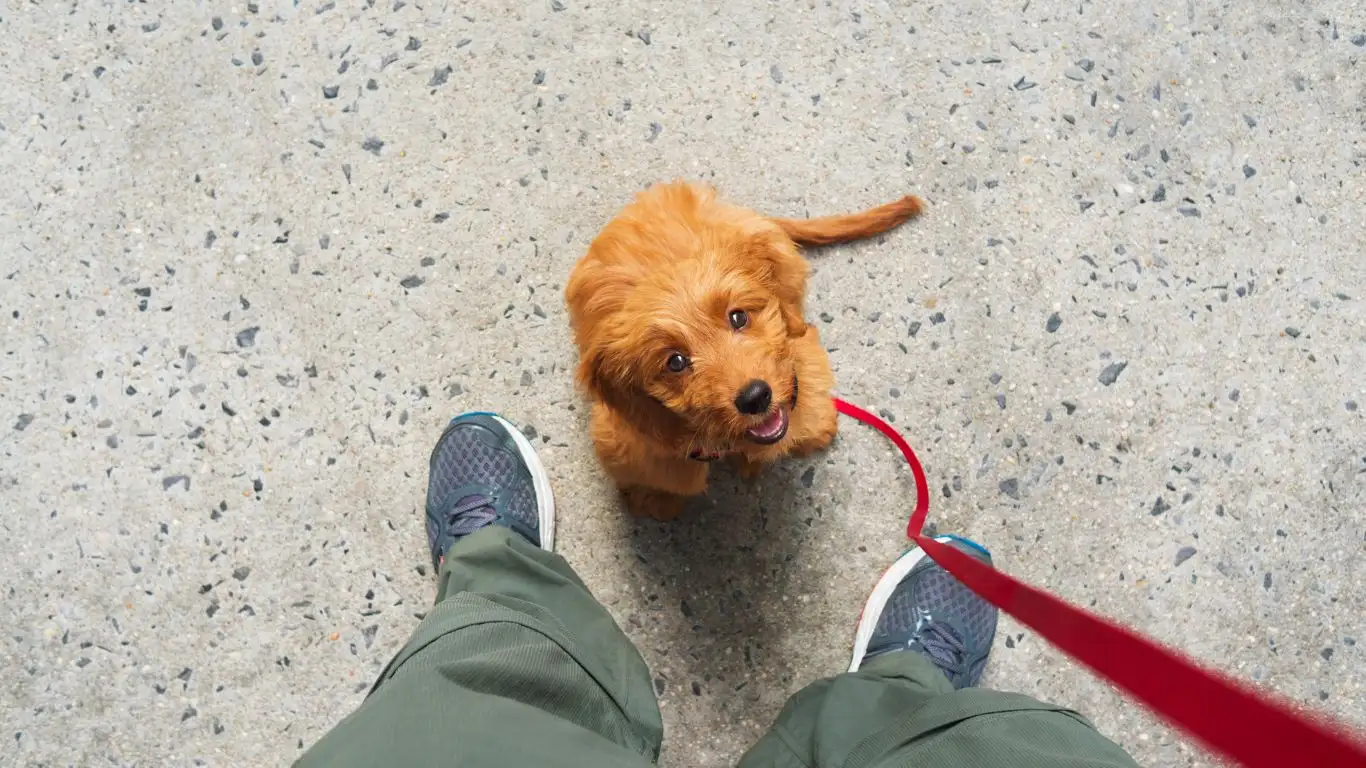
Before we dive into training methods, it’s important to understand why dogs are often terrified of fireworks in the first place. The fear usually stems from a combination of loud noises, bright flashes of light, and unfamiliar surroundings. Dogs have much more sensitive hearing than we do, and what sounds like a crackling firework to us can sound deafening to them. Combine this with the unpredictability of when the next firework will go off, and you have a recipe for stress.
Moreover, some dogs may have had negative experiences in the past, which only amplify their fear. Imagine a dog that once got startled by a loud boom or perhaps felt trapped during a fireworks show. The trauma from such experiences can build, making the fear even harder to overcome. So, as a pet owner, understanding the root cause of the anxiety is the first step to helping your dog manage their fear.
Signs Your Dog is Afraid of Fireworks
Not all dogs will display the same signs of fear during fireworks, but there are a few key behaviors to look out for:
- Shaking or Trembling: This is one of the most common signs of fear, and it’s not just cold-related!
- Whining or Barking: Dogs may vocalize their discomfort when they’re overwhelmed.
- Seeking Shelter: Many dogs will try to hide under furniture, in closets, or even in the bathroom to escape the noise.
- Pacing or Restlessness: Dogs who can’t find comfort will often pace back and forth or move in circles.
- Avoidance Behavior: Some dogs may try to run away from the source of the sound, making them more likely to get lost or hurt.
If your dog is exhibiting any of these signs, it’s time to start thinking about how to train them to tolerate fireworks in a safe and gentle manner. It can take time, so be patient and consistent throughout the process!
How to Train a Dog to Tolerate Fireworks

Training a dog to tolerate fireworks is a process that requires patience, consistency, and a bit of creativity. There’s no quick fix, but with the right approach, your dog can become more comfortable with the sounds of fireworks. Here are a few methods that have worked for me and my clients:
1. Desensitization
Desensitization is one of the most effective techniques for getting a dog used to fireworks. The idea is to gradually expose your dog to the sound of fireworks in a controlled and safe environment. By starting at a low volume and gradually increasing it, your dog will become less sensitive to the noise over time.
Here’s how you can do it:
- Start with Low-Volume Firework Sounds: You can find recordings of fireworks on YouTube or use a sound machine designed for pets. Start by playing the sounds at a low volume—just enough for your dog to hear but not react strongly.
- Pair with Positive Reinforcement: While the firework sounds are playing, give your dog treats, praise, or engage in a fun activity. This helps them associate the noise with something positive.
- Increase the Volume Gradually: Over time, gradually increase the volume of the firework sounds. Continue pairing with treats and praise as your dog remains calm.
- Repeat Regularly: The key to desensitization is repetition. Make this a daily or weekly exercise until your dog is comfortable with the sounds at a higher volume.
Desensitization works best when you start as early as possible, so don’t wait until the 4th of July to begin training. The more you expose your dog to controlled sounds, the less likely they are to become anxious when real fireworks are set off.
2. Counter-Conditioning
Along with desensitization, counter-conditioning is a technique that can work wonders. Essentially, this method changes your dog’s emotional response to the fireworks. Instead of feeling fearful, your dog learns to associate fireworks with something they love—like a favorite treat or activity. This takes a bit longer, but the results are incredibly rewarding.
To implement counter-conditioning:
- Identify a High-Value Reward: Figure out what motivates your dog the most. Is it a specific type of treat? A toy they adore? Use whatever gets your dog’s attention.
- Introduce the Firework Sounds at a Low Volume: Play the sound of fireworks at a volume that’s just below your dog’s tolerance threshold. This might be lower than what you used for desensitization.
- Offer the High-Value Reward: As soon as your dog hears the sound, give them the reward. This helps create a positive association.
- Gradually Increase the Volume: Over time, increase the volume of the fireworks sounds, continuing to pair them with the reward.
Be consistent with this method, and over time, your dog will start to associate fireworks with something fun and exciting, rather than something to fear.
Creating a Safe Space for Your Dog
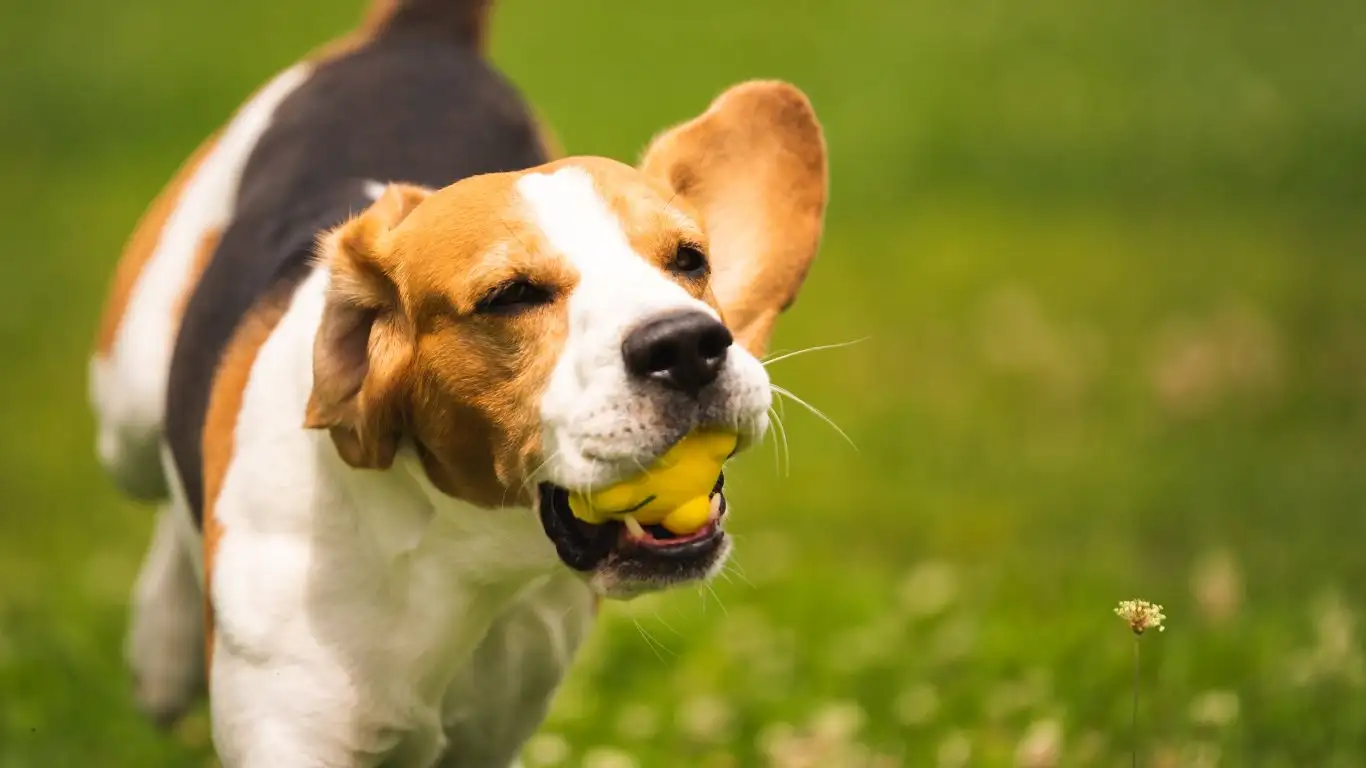
While training techniques are effective, it’s also crucial to provide your dog with a safe space where they can retreat if they feel overwhelmed. This is especially important during times when fireworks are unpredictable, like on New Year’s Eve or during a public celebration.
Here’s how you can create a safe, calming environment for your dog:
- Create a Quiet Area: Choose a room in your home that’s far away from the noise of fireworks. This could be a basement, bathroom, or any other enclosed space where your dog feels secure.
- Use Soundproofing: Close the windows and doors, and consider using heavy curtains or blankets to dampen the sound.
- Provide Comfort Items: Put familiar bedding, toys, or clothing with your scent in the safe space to help your dog feel at ease.
- Calming Music: Play soft, calming music or white noise to help drown out the sound of the fireworks.
A safe space is like a comfort zone where your dog can go to ride out the storm of fireworks. This method works particularly well in conjunction with desensitization and counter-conditioning.
Using Calming Products to Help Your Dog Tolerate Fireworks

In addition to training techniques, there are various calming products available on the market that can help reduce your dog’s anxiety during fireworks. Over the years, I’ve worked with several clients who have found success with these products, especially when combined with behavior training. Let’s go over a few options that might be worth considering:
1. Anxiety Wraps
If you’ve ever heard of a ThunderShirt, then you’re already familiar with the concept of anxiety wraps. These snug-fitting garments apply gentle, constant pressure to your dog’s body, which can have a calming effect—similar to swaddling a baby. Many dogs respond positively to these wraps during stressful events like fireworks displays.
From my experience, I’ve found that anxiety wraps can help to calm a dog down by providing them with a sense of security. It’s not a one-size-fits-all solution, but many dogs find comfort in the sensation of pressure. If you decide to try an anxiety wrap, be sure to let your dog get used to wearing it in a relaxed environment before the big event, so they aren’t startled by the sensation.
2. Calming Chews and Treats
Calming chews and treats are another popular option for reducing anxiety in dogs. These products often contain natural ingredients like chamomile, valerian root, or L-theanine, which can help promote relaxation. While they might not completely eliminate the fear of fireworks, they can certainly help take the edge off.
In my experience, calming treats work best when used in conjunction with other behavioral training methods. Give them to your dog about 30 minutes before the fireworks are expected to begin, so they have time to take effect. Some dogs may also respond well to a calming pheromone diffuser, which releases a synthetic version of the calming pheromone naturally produced by nursing mother dogs.
3. CBD for Dogs
In recent years, CBD (cannabidiol) products for pets have gained popularity as a natural solution to anxiety. Some dogs seem to respond really well to CBD oil or CBD-infused treats, and it has been shown to reduce stress in certain cases. While research on CBD for dogs is still limited, there are many pet parents who swear by its effectiveness in calming their pets during fireworks or thunderstorms.
If you’re considering trying CBD for your dog, it’s important to choose high-quality products made specifically for pets. Always consult your vet to ensure that CBD is a safe option for your dog, especially if they’re taking any other medications.
Distracting Your Dog During Fireworks
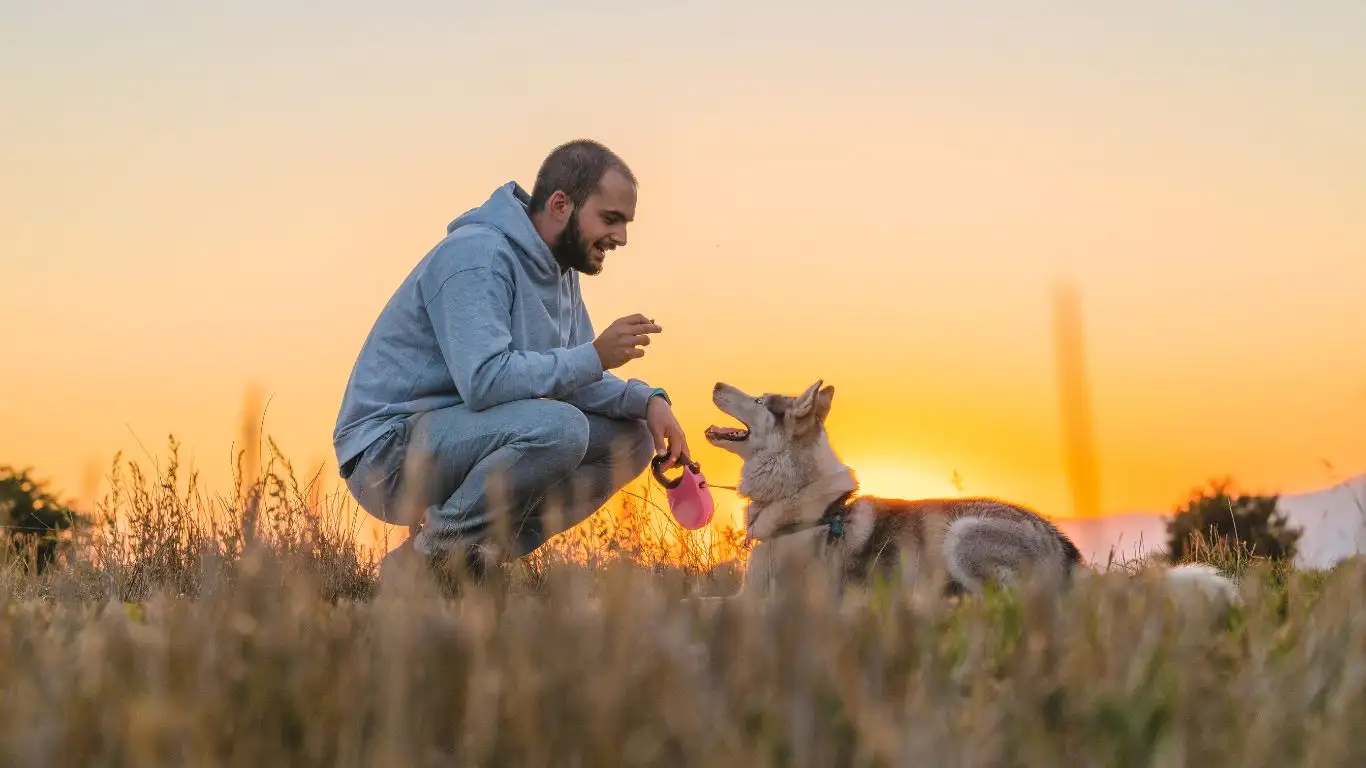
Sometimes the best way to help your dog through fireworks is simply by distracting them. Keeping their mind occupied can help shift their focus away from the stressful noises outside. I’ve found that dogs who engage in mentally stimulating activities during fireworks are often much calmer than those who are left to stew in their anxiety.
Here are some fun ideas for distracting your dog during fireworks:
1. Interactive Toys and Puzzles
Interactive toys that engage your dog’s mind are fantastic for distracting them from outside noises. These toys often require problem-solving and can keep your dog occupied for hours. Puzzle feeders or treat-dispensing toys are especially useful because they give your dog something positive to focus on.
One of my favorite go-to toys for calming dogs is a puzzle feeder that releases treats as the dog interacts with it. This gives the dog a sense of accomplishment and keeps them focused on the task at hand, rather than the fireworks outside. Make sure the puzzle is challenging enough to keep your dog engaged, but not so hard that it frustrates them.
2. Playtime and Exercise
If you’re able to, a great way to tire your dog out before fireworks begin is with a bit of extra exercise. A long walk, a fun game of fetch, or even some indoor playtime can help burn off excess energy and make your dog feel more relaxed when the loud noises start.
Exercise is a natural stress reliever for dogs, and it’s especially effective if you can fit in a session before the fireworks start. After a good workout, your dog may be more likely to settle down and focus on relaxing during the chaos outside.
3. Scent Therapy
Scent therapy, or aromatherapy for dogs, is another way to help your pup chill out. There are essential oils made specifically for dogs that can create a calming environment. Lavender and chamomile are two of the most commonly used scents to promote relaxation in dogs.
When using essential oils for scent therapy, be sure to choose dog-safe options. Avoid using oils like tea tree or eucalyptus, as they can be toxic to pets. A diffuser in your dog’s safe space can help fill the room with a soothing scent and create a calming atmosphere that makes it easier for your dog to relax.
Managing Your Own Anxiety Around Fireworks
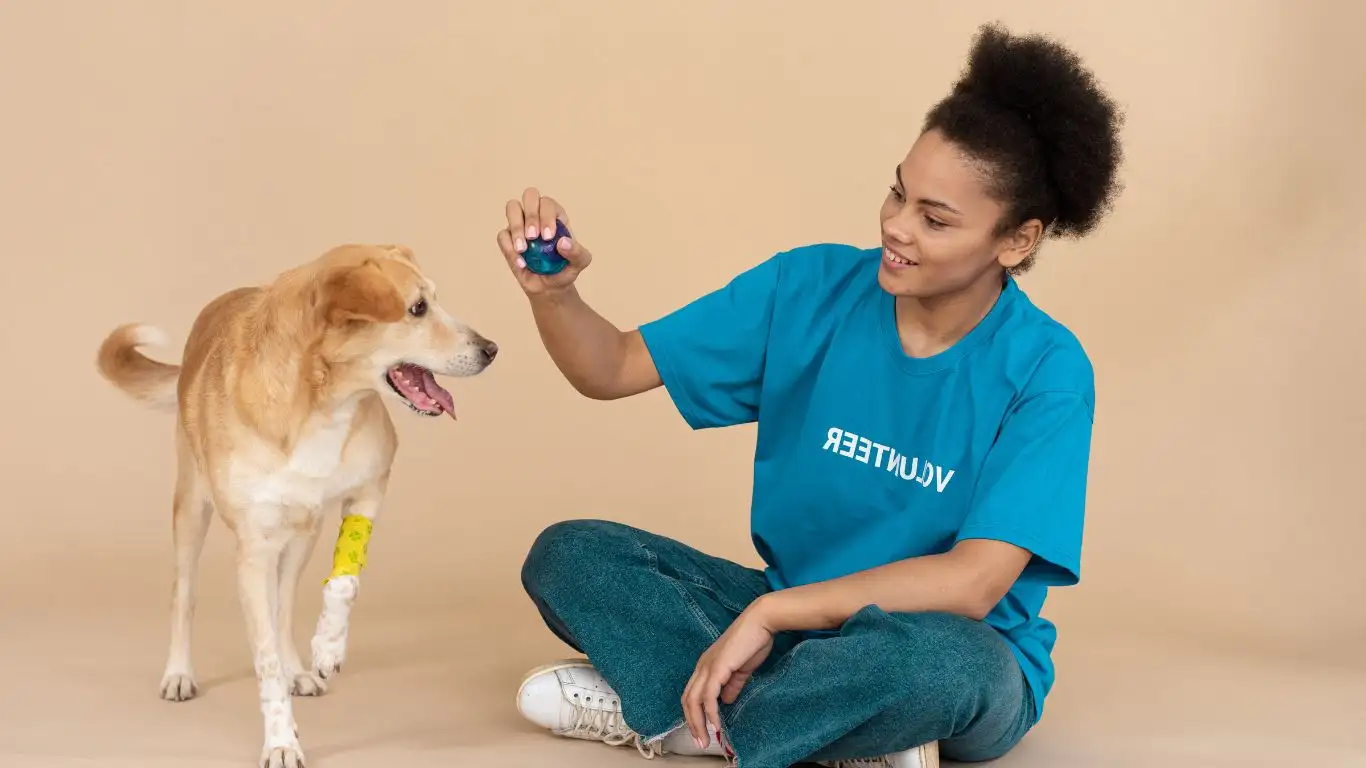
As a dog owner, it’s easy to get caught up in your pet’s anxiety and stress about fireworks. However, your own feelings can affect your dog’s behavior. If you’re visibly anxious or stressed out, your dog might pick up on that energy and feel even more unsettled.
When I work with clients, I always emphasize the importance of staying calm and composed, even when the fireworks are booming in the distance. Dogs are highly sensitive to our emotions, and if they sense that you’re worried or stressed, they may feel the need to react in the same way. It’s essential to lead by example and remain calm during fireworks, so your dog can look to you for reassurance.
To manage your own anxiety, try practicing deep breathing, meditation, or mindfulness techniques. If you’re able to stay calm, your dog will likely follow your lead and feel more secure. Remember, it’s a process—and with time, both you and your dog will become more comfortable during fireworks displays.
Additional Training Tips for Managing Firework Anxiety
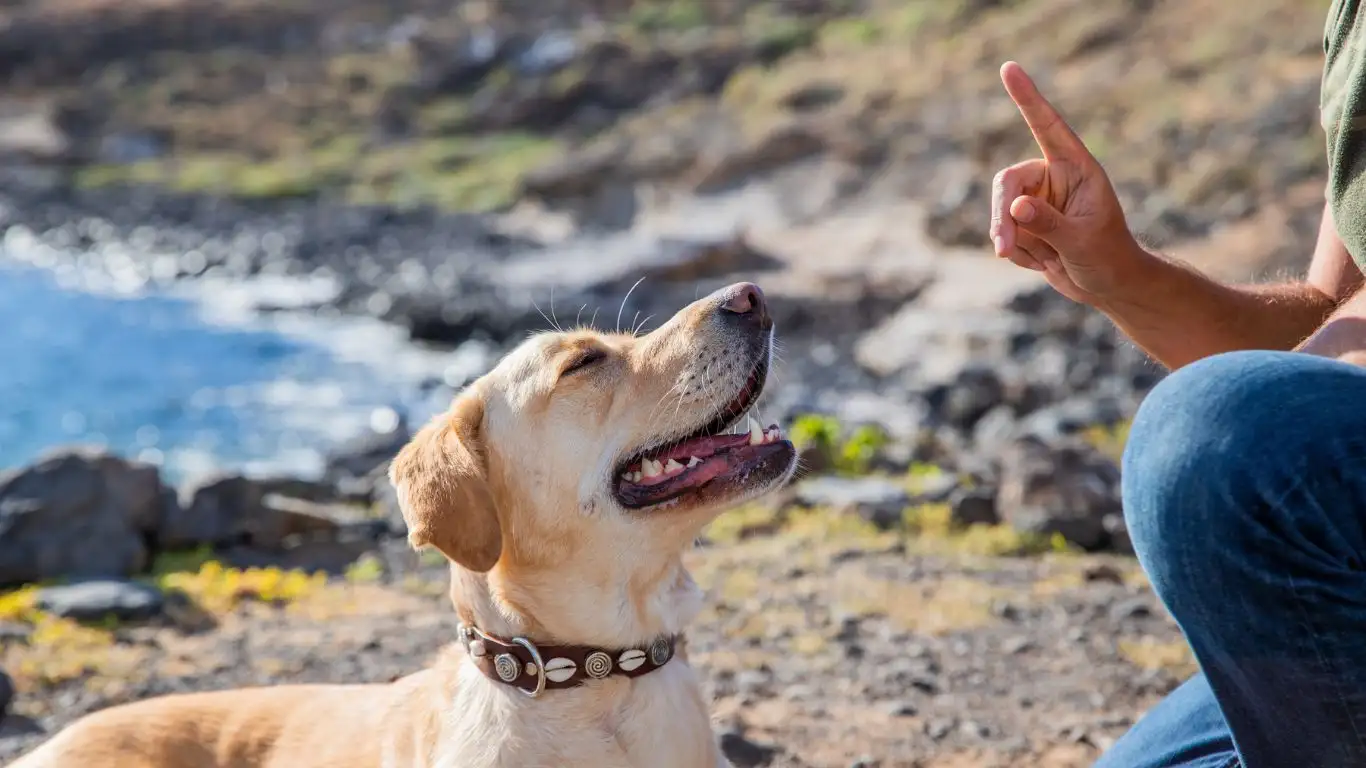
As we’ve covered so far, there are several strategies that can help your dog tolerate fireworks, but it’s important to remember that consistency is key. These techniques don’t usually work overnight, so it’s crucial to stick with them and be patient. As someone who has worked with numerous dogs facing firework anxiety, I’ve found that small, incremental improvements over time really do make a difference. Let’s dive into some additional training tips that will help make the process even smoother for you and your pup.
1. Use Clicker Training for Positive Reinforcement
Clicker training is one of the most effective tools for reinforcing good behavior in dogs. This technique involves using a small, hand-held device that makes a distinct “click” sound when pressed. When your dog behaves in a way that you want to reinforce, such as staying calm while fireworks are going off, you immediately click and reward them with a treat.
Using a clicker is especially beneficial during desensitization sessions. For example, when you’re gradually increasing the volume of firework sounds, you can click and reward your dog every time they remain calm. This helps them understand that calm behavior during fireworks leads to positive outcomes. Over time, your dog will learn to associate fireworks with rewards, further reducing their anxiety.
2. Practice Relaxation Techniques
In addition to desensitization, it’s a great idea to practice relaxation exercises with your dog. These exercises can help your dog feel more at ease during high-stress situations, like fireworks displays. One relaxation technique that has worked well for some dogs is called “settling.”
To practice settling, you’ll want to teach your dog to lie down and relax in a calm, quiet environment. Start with short sessions and reward your dog with treats and praise for calm behavior. Gradually, you can introduce a cue word like “settle” or “relax” and use it when you want your dog to calm down during fireworks.
Another helpful relaxation exercise is deep breathing. While this one’s more for you as the owner, dogs often respond to the atmosphere you create. Breathing slowly and deeply can signal to your dog that it’s okay to relax and take things easy. The more you practice relaxation with your dog, the more likely they are to remain calm during stressful events.
Preparing for Fireworks Season: Proactive Steps
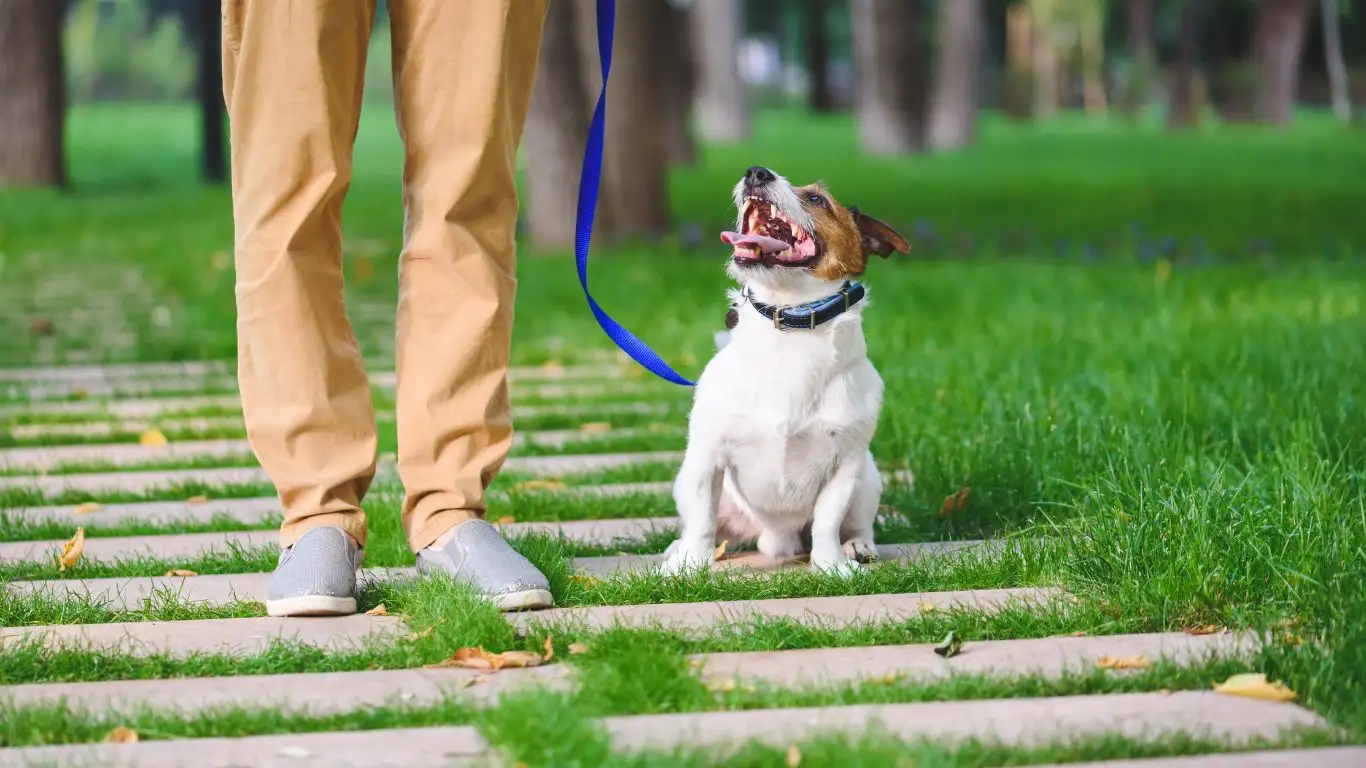
It’s not enough to simply wait until fireworks are scheduled. If you want to give your dog the best chance to remain calm, it’s crucial to take proactive steps before firework season begins. Over the years, I’ve found that the best results come when owners start preparing well in advance. Here’s how you can help your dog get ready for the fireworks season:
1. Create a Firework Emergency Plan
As much as we’d like to think fireworks will always be predictable, they aren’t. Some neighborhoods set them off for weeks leading up to a big event, while others may have spontaneous fireworks displays. This unpredictability can cause stress for your dog if you’re not prepared. So, it’s important to have an emergency plan in place.
Your plan should include the following steps:
- Identify a Safe Space: As mentioned earlier, designate a quiet, comfortable room where your dog can retreat to when fireworks start.
- Plan for Distractions: Have calming toys, treats, and possibly even an anxiety wrap ready to go. The key is to make sure your dog has everything they need to feel secure.
- Notify Your Neighbors: If you know of an upcoming event that might involve fireworks, it’s a good idea to inform your neighbors. They may be willing to give you a heads-up or take precautions to minimize the noise.
- Stay with Your Dog: If possible, be with your dog during the fireworks to provide reassurance and help them feel safe.
By taking the time to prepare your dog for the possibility of fireworks in advance, you’ll reduce the likelihood of stress and anxiety in the moment.
2. Set a Routine During Firework Season
Dogs thrive on routine. They feel most secure when they know what to expect next. During firework season, try to maintain as much of your usual routine as possible. Keep feeding times, walks, and bedtime consistent. This structure can provide a sense of stability for your dog, even when fireworks are disrupting the outside world.
Incorporating routine training sessions can also help reinforce calm behavior. Set aside time each day to work on desensitization or relaxation exercises, so your dog is regularly exposed to firework sounds in a controlled environment. This can reduce the overall stress they feel during actual events.
3. Keep Your Dog Safe During Fireworks
While it’s important to focus on behavioral training and calming techniques, you should also take safety precautions to ensure your dog is physically protected during fireworks. Many dogs will become so frightened that they may try to run away or escape. To prevent this, make sure your dog is always wearing identification tags, including a microchip if possible.
If your dog is prone to running away during fireworks, it’s a good idea to keep them on a leash, even inside your home, or in a secure area where they can’t injure themselves. The last thing you want is for your dog to slip out through an open door or window while they’re panicked.
References and Resources
As a Canine-Assisted Therapy Trainer, I’ve gathered valuable resources over the years that can help dog owners navigate the challenge of firework anxiety. If you want to dive deeper into dog behavior or seek professional advice, here are a few websites to explore:
These resources offer expert advice, behavioral science tips, and even product recommendations that can help your dog feel more comfortable during fireworks and other stressful events.
Disclaimer
The information provided in this article is intended for general guidance and educational purposes only. Always consult with a professional veterinarian or a certified dog behaviorist for personalized advice, especially if your dog’s anxiety is severe or if you’re considering introducing new products such as CBD or calming treatments. Your dog’s safety and well-being should always be a top priority. I’ve shared these tips based on my own experience and training practices, but every dog is unique, and what works for one dog may not work for another.
